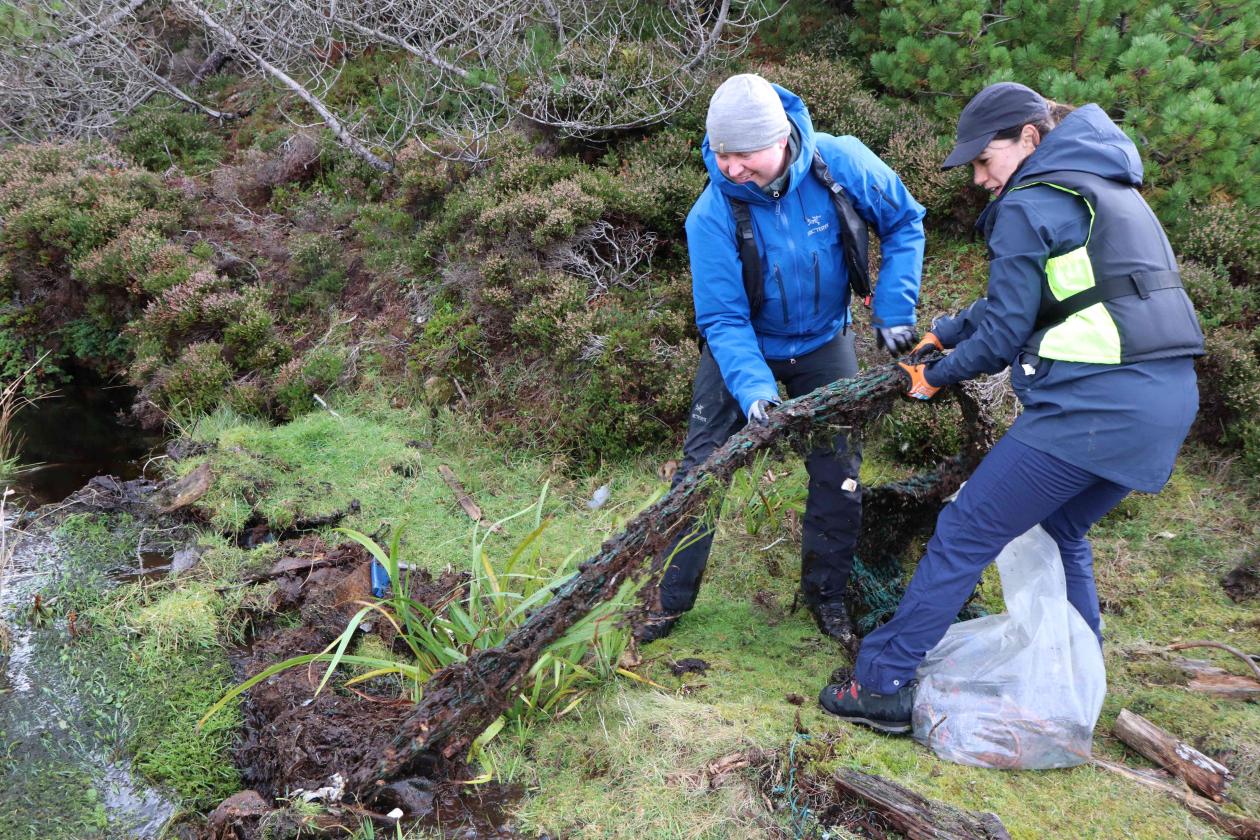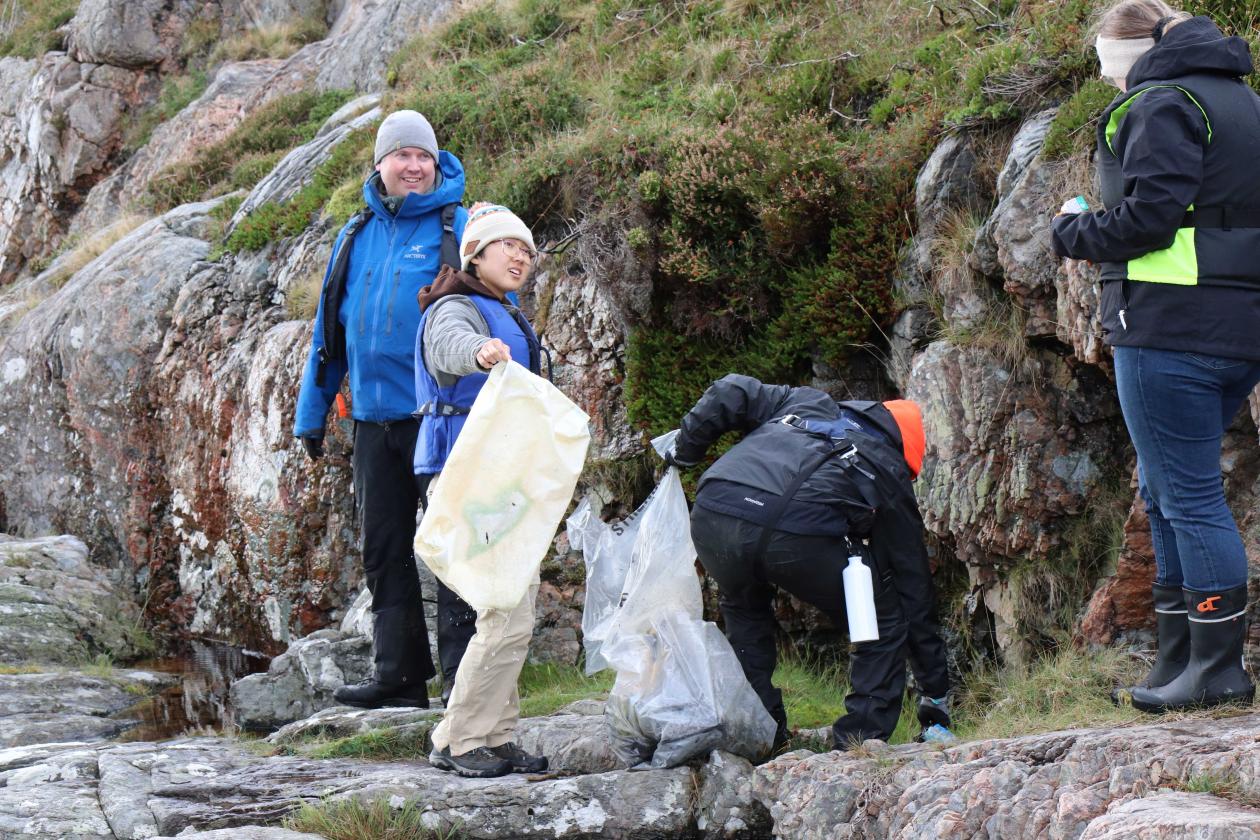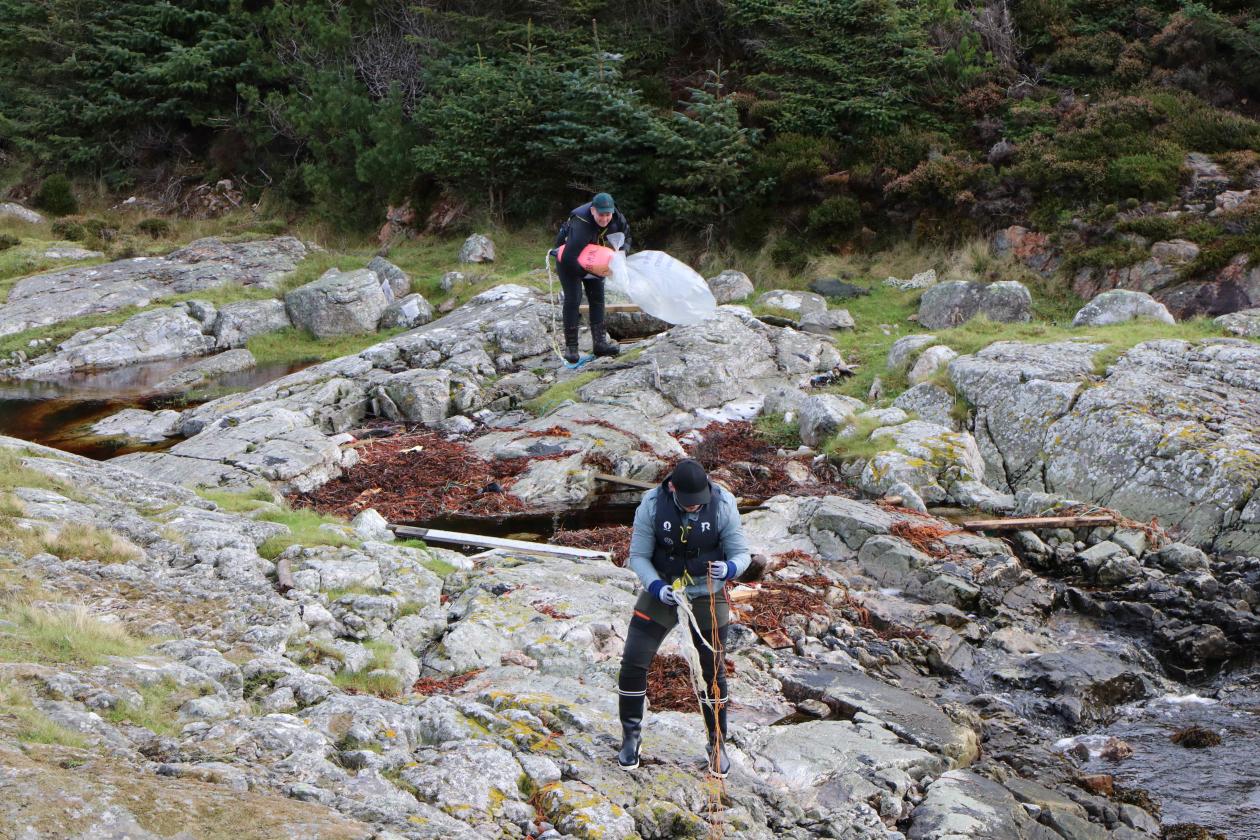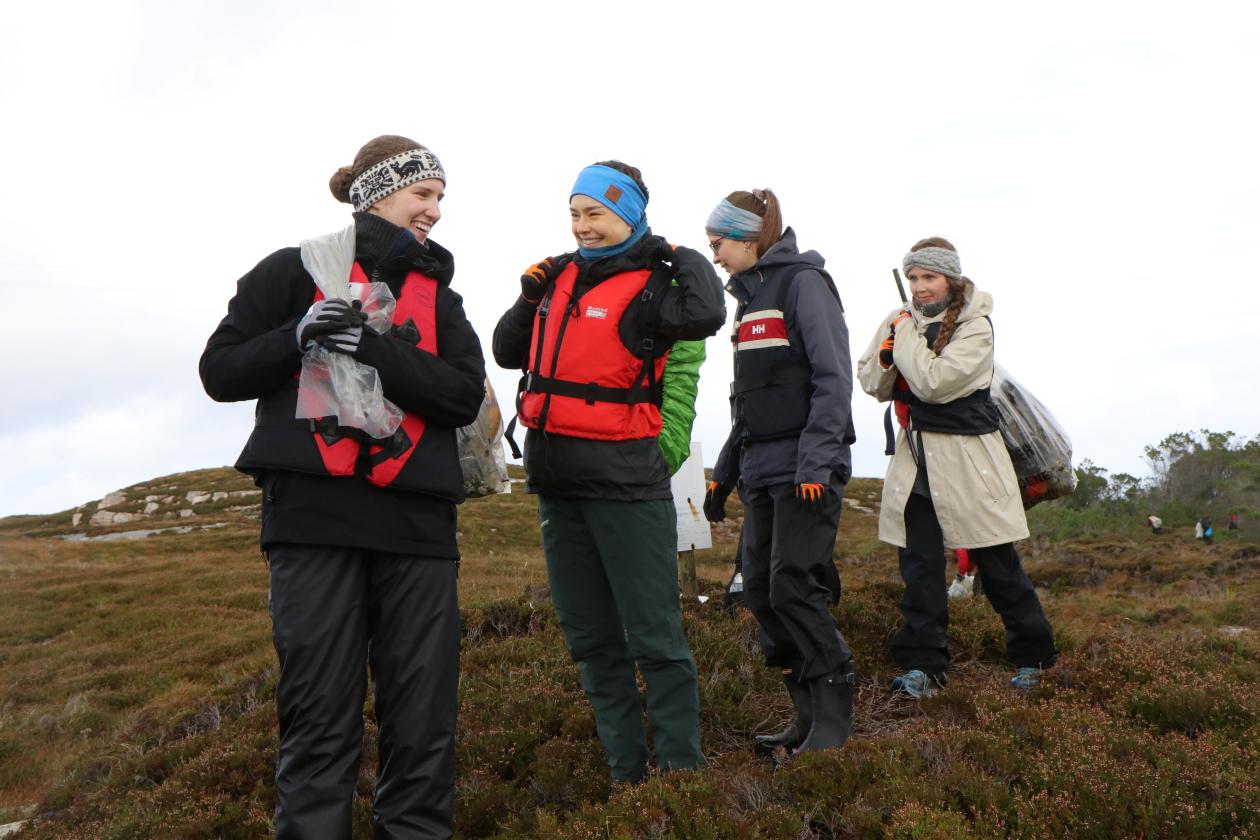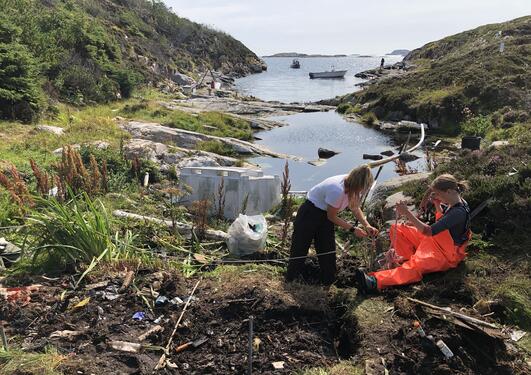Cleaning the Plastic Island
Students and staff from the University of Bergen, together with long-standing partners, cleaned “Plastic Island” Lisle Lyngøy during this year’s plastic cleanup campaign.

Main content
For the fifth consecutive year, UiB and its partners contributed to the national effort, with this year’s cleanup targeting Lisle Lyngøy, an island near Hellesøy famously featured in the NRK (Norwegian Broadcasting Coorporation) documentary Plasthavet (“The Plastic Ocean”).
The cleanup campaign, held on September 12, was organized by UiB’s Plastics Network and the Sustainability Pilots in collaboration with Bergen og Omland Friluftsråd (BOF) and Naturvernforbundet Hordaland.
“It was a day of remarkable engagement, determination, and teamwork from students and staff,” said Professor Odd André Karlsen, head of the Plastics Network at UiB. “Our collaboration with BOF was outstanding—they provided transport and meals for all participants. Seeing the plastic waste firsthand on Lisle Lyngøy was eye-opening, revealing the extent to which plastic has impacted the landscape and ecosystem.”
Research Island
Upon arrival at Hellesøy, participants were ferried to Lisle Lyngøy by boats provided by BOF, an exciting start to their day.

BOF provided boat transport to Lisle Lyngøy.
The island had previously been the focus of a multi-year research project (2018-2023) led by NORCE, UiB, Clean Shores Global, and TAM NJFF Hordaland, represented by Kenneth Bruvik. The project aimed to understand how plastic waste affects local ecosystems and to evaluate the effectiveness of cleanup efforts.
Since 2018, Lisle Lyngøy has seen substantial plastic removal, making this year’s campaign a chance to assess the island’s current condition. While recent cleanups have significantly reduced visible plastic, debris remains plentiful, giving UiB participants plenty to do during their time on the island.

Student teamwork during the cleanup of “Plastic Island”.
Researcher Marte Haave, central to the NORCE project, rejoined this year’s campaign to share insights with participants.

Plastic researcher Marte Haave, now at SALT, was back on Lisle Lyngøy.
Haave explained that a large mound on the island’s southeastern bay, which appears natural, is actually composed of more than 70% plastic accumulated over decades. This plastic infiltration alters the island’s ecosystem in profound ways. A striking example was the discovery of caddisfly cases made from microplastics rather than natural materials, a telling sign of how deeply plastic has permeated the local environment.

Caddisfly cases with plastic pieces.
Insects, animals, and humans - on Lisle Lyngøy and elsewhere in the world - ingest microplastics, but more research is needed to answer what consequences this could have.
NORCE’s project results suggest that while plastic pollution negatively impacts Lisle Lyngøy’s ecosystem, regular cleanups can mitigate these effects, particularly by reducing microplastic presence in the area.
“This campaign demonstrated that cleanup efforts truly make a difference; there’s significantly less plastic on Lisle Lyngøy now,” said Professor Karlsen.
“We were also fortunate to have Haave with us, combining scientific insight with hands-on work, which enriched the experience for everyone involved”.

More than 30 students and staff participated in this year’s cleanup campaign.
A day with many impressions
UiB’s Sustainability Pilots, who helped organize the event, reflected on the lasting impressions of the day. “We expected some plastic to remain, but it was surprising how much was still there. Within just 10 minutes, our first garbage bag was full,” said Sustainability Pilots Dina Bergmann, Kristine Gulla, and Kathrine Wie Helgøy.
“Seeing so much microplastic is overwhelming, but it was inspiring to work alongside students and staff committed to environmental stewardship. Hearing Marte Haave’s insights on how plastic changes landscapes added an important perspective.”

Students and Sustainability Pilots at UiB: from left, Dina Bergmann, Kristine Gulla, and Kathrine Wie Helgøy.
In just over an hour, the team collected 155 kilograms of plastic waste from Lisle Lyngøy. Over the past five years, UiB’s Strandryddeuka efforts have removed approximately 8.7 tons of marine debris from Norwegian shores.
“We look forward to continuing this important work and organizing another cleanup campaign next year,” concluded Professor Karlsen.

Return after a successful campaign on Lisle Lyngøy.
